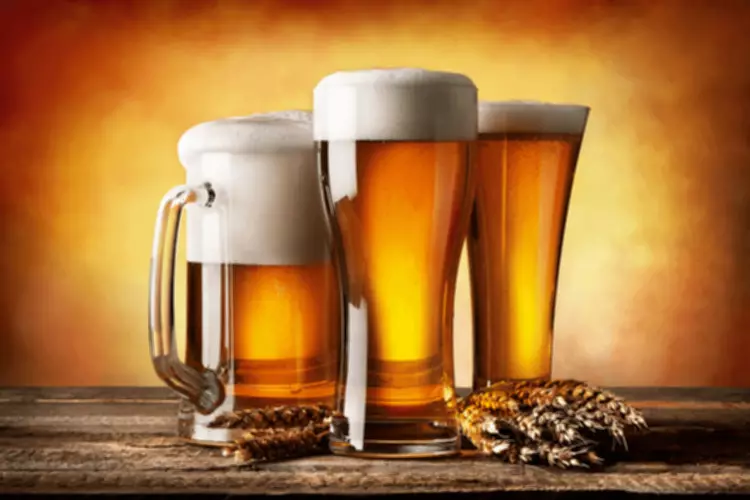
Characteristics of the 20 studies included are presented in Table In total, data from 477,200 individuals, including 12,556 incident cases of diabetes, were included. Six studies included only men, five only women, eight both men and women (separately), and one men and women combined together. All but four adjusted for age at minimum; for these, only crude measures were available once those that adjusted for factors on the causal pathway were excluded. Diabetes ascertainment varied from self-report and data linkage to national registers to an oral glucose tolerance test (OGTT), the current clinical gold standard. If you’re having a drink or two – especially if you’re in the sun – it can have an effect on your body’s ability to regulate its temperature.
Does Trulicity interact with lab tests?

It has been reported that chronic high doses of alcohol alone have been exhibited to be efficient in producing reversible insulin resistance [12]. High concentrations of ethanol may lead to reduced insulin binding [13] and inhibition of intracellular signalling related to that of insulin [14]. Moreover, alcohol dependence was one of the concomitant factors in subjects with impaired glucose tolerance that are diagnosed with performing standard 75 g oral glucose tolerance test. This suggests that alcohol might impair fasting and postprandial glycemic controls and thus, alcohol consumption may be a risk factor for T2DM [15]. Extensive studies using animal models of chronic alcohol intake have provided insight into the possible mechanisms, which contributes to the development of diabetes.
Top Tips for Drinking Alcohol with Diabetes
Although based on a minority of studies, there is also the possibility that reductions in risk may have been overestimated by studies using a referent group contaminated by less healthy former drinkers. So yes, you can still drink, but you need to be aware of how it can affect your body and how to manage this. For example, drinking can make you more likely to have a hypo, because alcohol interferes with your blood sugar levels.
Potential confounders
The fact that alcohol induced brain damages and cognitive dysfunction might precede other complications of alcohol, strongly suggests the need for research on their relationship. Alcohol-induced brain damages were commonly observed in otherwise, uncomplicated alcoholics [58]. Thus, brain is one of the most vulnerable organs from alcohol-induced toxicity. In our study, patients in the alcohol group significantly reduced their waist can diabetics get drunk circumference and LDL cholesterol and A1C levels, but these changes were not statistically significant compared with the change in these parameters in the placebo group. Intriguingly, we observed that diabetic subjects consuming 13 g alcohol daily for 3 months showed no increase in HDL. The likely explanations for this observation are related to the alcohol dose or duration or to unique characteristics of the study population.

The 10 Best Types of Alcohol for People with Diabetes
These criticisms range from the tool’s focus upon the generalizability of a given sample to the general population as opposed to its internal validity (59) to the arbitrary nature of some questions that appear to weaken interrater reliability (60,61). With these limitations in mind, the Newcastle-Ottawa quality assessment tool should be considered only as a rough guide for readers as opposed to a definitive measure of study quality. Upon identifying a single study that contributed a substantial proportion of sampled data, an a posteriori sensitivity analysis was undertaken.
- For example, if you think a drink might spike your blood sugar, maybe you accept it (and clink glasses for Instagram), but sip it slowly throughout the evening (alongside plenty of water).
- Heavy drinking, particularly in diabetics, also can cause the accumulation of certain acids in the blood that may result in severe health consequences.
- Once eligible studies had been short-listed, relevant characteristics and results were extracted and independently verified by a second reviewer.
Does my health history affect whether I should take Trulicity?
In contrast to chronic alcohol consumption in the fed state—which raises blood sugar levels, resulting in hyperglycemia—alcohol consumption in the fasting state can induce a profound reduction in blood glucose levels (i.e., hypoglycemia). That effect has been observed in both type 1 and type 2 diabetics as well as in nondiabetics (Arky and Freinkel 1964). Hypoglycemia can have serious, even life-threatening, consequences, because adequate blood sugar levels are needed to ensure brain functioning. With regard to the potential sick-quitter effect, this may be a concern in our study. Unfortunately, we do not have any information about lifetime abstainers, occasional drinkers or former drinkers in our study.
Taking these drugs with Trulicity could affect how well your blood sugar is managed. If your condition is treated with Trulicity and insulin, your doctor may prescribe a lower dosage of insulin than is typical. This will reduce your risk of low blood sugar when these medications are used together. Alert friends and family about the signs and symptoms of hypoglycemia and how these signs could differ from overconsumption of alcohol. Let them know how to check your blood sugar if you can’t and where you have your hypoglycemia treatments. If you are unconscious and experiencing severe hypoglycemia, encourage them to call 911 and to stay with you until emergency personnel arrive.
Choose foods that contain carbohydrates so that you have some glucose in your system (meaning, you will be at lower risk of having low blood sugar). People with diabetes should be sure to pay attention to any potential warnings. People with diabetes have to be very careful when it comes to drinking alcohol.

Type 2 Diabetes and Heart Disease Risk

This potentially beneficial effect was observed in both men and women, regardless of age. The alcohol amounts administered in those studies were usually between 0.5 g/kg (gram per kilogram body weight) and 1 g/kg, leading to blood alcohol levels (BALs) between approximately 0.03 and 0.1 percent2 (McDonald 1980). Those doses are equivalent to approximately 2.5 to 5 standard drinks.3 Interestingly, studies of acute alcohol exposure in nondiabetic people have yielded quite variable results, noting decreases, increases, or no changes in glucose levels.
Moreover, psychosocial factors as risks or buffers in the aetiology of type 2 diabetes also seem important [17,18]. While studies have shown that non-drinkers have less favourable psychosocial characteristics compared to moderate drinkers [15], the role of psychosocial factors in the alcohol–diabetes association has not yet been examined. To circumvent this concern, a variable infusion of glucose was administered, which effectively clamped the blood glucose at either fed or high physiological concentrations during the concomitant infusion of saline or alcohol.
